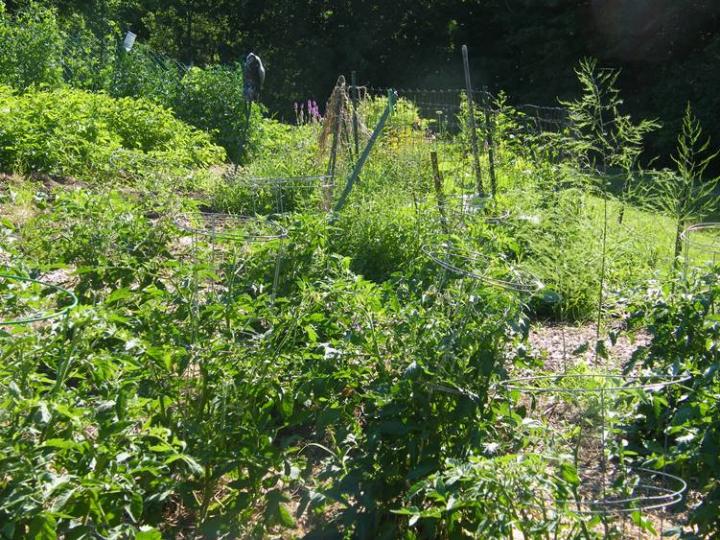






I count among my greatest achievements the fact that I’ve eaten something from the hillside garden behind my house or the wild land around it nearly every day for more than 45 years.
What a miraculous fact of daily life that the ground beneath our feet passes into plants, then into ourselves and becomes our bones, blood and tears.
We are stardust, we are golden, we are billion year old carbon,
And we got to get ourselves back to the garden.
–Crosby, Stills, Nash, & Young
Can you think of any another activity that simultaneously serves as many individual and community needs as food gardening?
Consider these reasons …
Though large and productive, my food garden is a messy, humble enterprise that wouldn’t make the cover of a glossy gardening magazine.
I don’t romanticize the work of it, either. Tending a big food garden demands hard labor, discipline, skill, and faithfulness. Although the garden requires knowledge and many different competencies, it delivers mysteries beyond the realms of facts and science.
Human life—my life—depends utterly on the on the alchemy of soil and sun and green leaves. All the great cycles of organic life repeat endlessly in the garden.
On the inner side of my life, my vegetable garden has grounded me. Even though the work of it takes place on many levels, gardening is intensely physical. Direct contact with the soil, hacking away at the vicious hardpans underlying my topsoil, hauling endless loads of rock, turning compost, spreading mulch.
These concrete activities have allowed many raw spaces in my psyche to heal. I’ve done a powerful load of grieving, raging, crying, shrieking and celebrating up there among my cabbages and onions.
“Food will win the war” was a popular slogan during both World Wars I and II. Victory Gardens were important symbols of patriotism. Home gardeners helped conserve resources vital to the war effort and made up for severe labor shortages in the agricultural sector. Gardens also gave emotional and spiritual strength to the folks on the home front.
Beyond a patch of good dirt (or a few tubs of potting soil), hand tools, and seeds, home food producers don’t need much by way of tools and equipment to raise fruits and vegetables. A plot managed with intensive techniques can easily yield 10 times the produce of a more conventional garden.
Psychologists tell us many Americans have difficulty imagining their futures. Allow me to share what I imagine for myself: This spring, I am planting half again as many roasting peppers, 100 strawberry plants, and 1000 onion seedlings, but only half the tomatoes I planted last spring.
It’s that simple.
Margaret Boyles lives in a wood-heated house in central New Hampshire. She grows vegetables, keeps chickens, swims in a backyard pond in summer, snowshoes in the surrounding woods in winter, and commutes by bike whenever possible.
Copyright © www.100flowers.win Botanic Garden All Rights Reserved